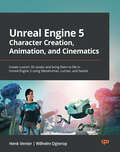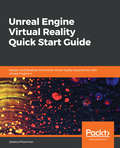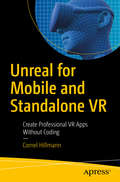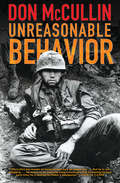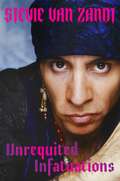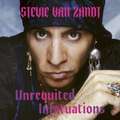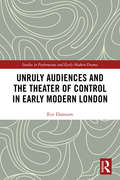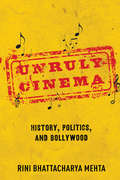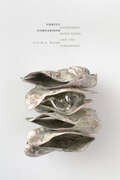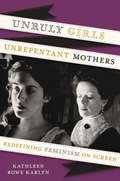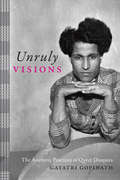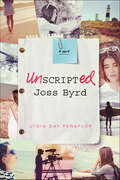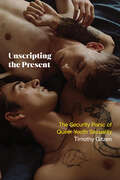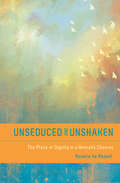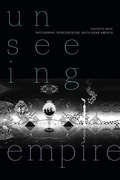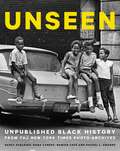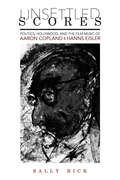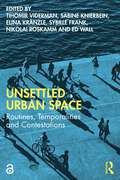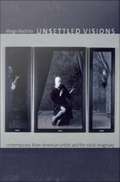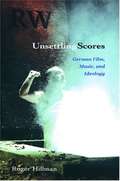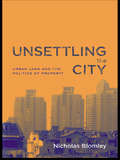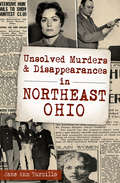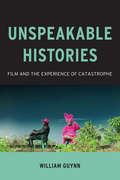- Table View
- List View
Unreal Engine 5 Character Creation, Animation, and Cinematics: Create custom 3D assets and bring them to life in Unreal Engine 5 using MetaHuman, Lumen, and Nanite
by Henk Venter Wilhelm OgteropGet to grips with the base workflow and create your own cinematic scenes in UE5 by learning to develop the main elements, animate, and combine them into a complete rendered movie scene with the help of key images printed in colorKey FeaturesPerform your entire rigging and animation workflow inside Unreal Engine 5 using Control Rig toolsCreate hand-keyed animations and clean up motion capture natively in Unreal EngineLearn the basics of creating 3D assets and customizing a MetaHuman for your movie needsBook DescriptionUnreal Engine 5 (UE5) offers beginners and seasoned professionals the ability to create detailed movie scenes with realistic human characters using MetaHuman and combine it with custom props and environments. It also comes with built-in industry standard animation tools to develop such scenes in a fraction of the time compared to old methods. This book takes you through the entire 3D movie production pipeline using free (open - source) software.By following the step-by-step, beginner-friendly tutorials in this book, you'll learn how to create your own custom 3D assets in Blender and texture these 3D assets in Quixel Mixer. Next, you'll take these completed 3D assets into Unreal Engine 5 and use them to build a virtual 3D movie set for your 3D movie. You'll also populate your 3D movie set by using Quixel MegaScans assets and create and customize your own photorealistic human character using MetaHuman Creator and UE5. As you advance, you'll discover how to rig, skin, and animate these 3D assets and characters using Blender and UE5's new Control Rig. Finally, you'll explore the process of setting up your movie cameras and animation sequences and rendering your 3D movie using UE5's Sequencer.By the end of this Unreal Engine book, you'll have learned how to combine different elements in UE5 to make your own movies and cinematics.What you will learnCreate, customize, and use a MetaHuman in a cinematic scene in UE5Model and texture custom 3D assets for your movie using Blender and Quixel MixerUse Nanite with Quixel Megascans assets to build 3D movie setsRig and animate characters and 3D assets inside UE5 using Control Rig toolsCombine your 3D assets in Sequencer, include the final effects, and render out a high-quality movie sceneLight your 3D movie set using Lumen lighting in UE5Who this book is forThis book is for beginners to Unreal Engine or 3D animation and art in general who want to learn the entire process of creating 3D movies with Unreal Engine 5. Experienced 3D artists and animators new to UE5 will also find this book invaluable as it covers cutting-edge techniques for making real-time 3D movies using Unreal Engine, Blender, Quixel Mixer, and Quixel Bridge. Although prior experience with 3D software is not necessary, it will be helpful in understanding the concepts more easily.
Unreal Engine Virtual Reality Quick Start Guide: Design and Develop immersive virtual reality experiences with Unreal Engine 4
by Jessica PlowmanUnreal Engine 4 for virtual reality game design, development, User Experience design techniques and Blueprint programming to create virtual reality gameplay for HTC Vive, Oculus Rift, PSVR, and Windows Mixed Reality headsets. Key FeaturesBuild VR games from scratch with the power of Unreal Engine 4Learn User Experience design practices to take your VR game to the next levelUnderstand the best practices to creating art for games on HTC Vive, Oculus Rift, and PSVRBook DescriptionWith the ability to put players directly in the game, virtual reality gives users the chance to experience digital worlds directly. Nevertheless, many designers are unsure where to start when working with this amazing technology.With this book, you will learn user experience design processes and create immersive gameplay experiences designed for entertainment and player comfort. Using the power of Unreal Engine 4’s Blueprint visual scripting language, you will build player interaction and locomotion systems from scratch and use these flexible systems to create a sample game, as well as develop functional 2D and 3D user interfaces for players to interact with. And also learn the best practices for creating game art for virtual reality. Finally, you will learn how to test your application with your target audience and finalize your game for distribution.By the end of this book, you will have the knowledge to be able to make the leap from traditional game development to creating immersive virtual reality experiences using Unreal Engine 4.What you will learnUnderstand how to get started with VR development in Unreal Engine 4Design and create interaction and locomotion systems from scratchPlan and program a sample game for VRUnderstand how VR affects user experience and user interfacesDiscuss what is needed to create optimized art for VRTest your game with users and prepare for distributionWho this book is forThe audience for this book is intermediate or advanced users of Unreal Engine 4 but who have not begun working with VR technology. These users are familiar with the game engine and have an interest in VR technology. They are just beginning to explore the VR features that the game engine has to offer.
Unreal for Mobile and Standalone VR: Create Professional VR Apps Without Coding
by Cornel HillmannApply the techniques needed to build VR applications for mobile and standalone head-mounted displays (HMDs) using the Unreal Engine. This book covers the entire VR ecosystem including production tools, Unreal engine, workflows, performance and optimization, and presents two fully-developed projects to reinforce what you've learned. Media designers, CG artists and other creatives will be able to take advantage of real-time engine techniques and easy-to-learn visual scripting logic to turn their creations into immersive and interactive VR worlds.Gear VR, the Oculus Go and other Android based VR HMDs are becoming exciting new platforms for immersive business presentations, entertainment and educational solutions. The Unreal engine, one of the world’s most powerful and popular game engines, is now free to use and has become increasingly popular for real-time visualizations and enterprise solutions in recent years.With Unreal's powerful blueprint visual scripting system, non-coders can now design blueprints in Unreal, unlock the power of rapid prototyping, and create complex interactions without a line of code. Get your copy of Unreal for Mobile and Standalone VR today and begin using this powerful tool-set to create high-end VR apps for a wide range of applications from games, B2B, to education.What You'll LearnExplore the VR ecosystem, including history, recent trends and future outlookReview tool set, graphics and animation pipeline (Blender, Zbrush, Substance Painter and others)Examine graphics optimization techniquesSet up a project and the target platformDesign interaction with Unreal blueprintsDeployments, testing, further optimizationWho This Book Is ForMultimedia designers, CG artists, producers, app developers. No coding experience is required.
Unreasonable Behavior: An Autobiography
by Don McCullin“Unsparing reminiscences that effectively combine the bittersweet life of a world-class photojournalist with a generous selection of his haunting lifework” (Kirkus Reviews). Revised and updated after twenty-five years, Unreasonable Behavior traces the life and career of one of the top photojournalists of the twentieth century and beyond. Born in London in 1935, Don McCullin worked as a photographer’s assistant in the RAF during the Suez Crisis. His early association with a North London gang led to the first publication of his pictures. As an overseas correspondent for the Sunday Times Magazine beginning in 1966, McCullin soon became a new kind of hero, taking a generation of readers beyond the insularity of post-war domestic life through the lens of his Nikon camera. He captured the realities of war in Biafra, the Congo, Vietnam, Cambodia, and elsewhere, and the human tragedy of famine and cholera on the Bangladesh border and later, the AIDs epidemic in Sub-Saharan Africa. Already in 1968, when the Beatles wanted new press shots, they asked for Don McCullin. Harrowing and poignant, Unreasonable Behavior is an extraordinary account of a witness who survived to tell his tale and triumphed over the memories that could have destroyed him. “[Don McCullin] has been forfeit more times than he can remember, he says. But he is not bragging. Talking this way about death and risk, he seems to be implying quite consciously that by testing his luck each time, he is testing his Maker’s indulgence.” —John le Carré “McCullin handles much of the material culled from his war experiences like a seasoned thriller writer. His dialogue is convincing and sharp.” —The Observer
Unrequited Infatuations: A Memoir
by Stevie Van Zandt'A wonderfully original take on a Rock and Roll autobiography' Paul McCartney'An inimitable Rock 'n' Roll life told as boldly as it was lived' Bruce SpringsteenWhat story begins in a bedroom in suburban New Jersey in the early '60s, unfolds on some of the country's largest stages, and then ranges across the globe, demonstrating over and over again how Rock and Roll has the power to change the world for the better? This story.The first true heartbeat of UNREQUITED INFATUATIONS is the moment when Stevie Van Zandt trades in his devotion to the Baptist religion for an obsession with Rock and Roll. Groups like the Beatles and the Rolling Stones created new ideas of community, creative risk, and principled rebellion. They changed him forever. While still a teenager, he met Bruce Springsteen, a like-minded outcast/true believer who became one of his most important friends and bandmates. As Miami Steve, Van Zandt anchored the E Street Band as they conquered the Rock and Roll world.And then, in the early '80s, Van Zandt stepped away from E Street to embark on his own odyssey. He refashioned himself as Little Steven, a political songwriter and performer, fell in love with Maureen Santoro who greatly expanded his artistic palette, and visited the world's hot spots as an artist/journalist to not just better understand them, but to help change them. Most famously, he masterminded the recording of "Sun City," an anti-apartheid anthem that sped the demise of South Africa's institutionalized racism and helped get Nelson Mandela out of prison.By the '90s, Van Zandt had lived at least two lives-one as a mainstream rocker, one as a hardcore activist. It was time for a third. David Chase invited Van Zandt to be a part of his new television show, the Sopranos-as Silvio Dante, he was the unconditionally loyal consiglieri who sat at the right hand of Tony Soprano (a relationship that oddly mirrored his real-life relationship with Bruce Springsteen).Underlying all of Van Zandt's various incarnations was a devotion to preserving the centrality of the arts, especially the endangered species of Rock. In the twenty-first century, Van Zandt founded a groundbreaking radio show (Underground Garage), a fiercely independent record label (Wicked Cool), and developed a curriculum to teach students of all ages through the medium of music history. He also rejoined the E Street Band for what has now been a twenty-year victory lap.UNREQUITED INFATUATIONS chronicles the twists and turns of Stevie Van Zandt's always surprising life. It is more than just the testimony of a globe-trotting nomad, more than the story of a groundbreaking activist, more than the odyssey of a spiritual seeker, and more than a master class in rock and roll (not to mention a dozen other crafts). It's the best book of its kind because it's the only book of its kind.
Unrequited Infatuations: A Memoir
by Stevie Van Zandt'A wonderfully original take on a Rock and Roll autobiography' Paul McCartney'An inimitable Rock 'n' Roll life told as boldly as it was lived' Bruce SpringsteenWhat story begins in a bedroom in suburban New Jersey in the early '60s, unfolds on some of the country's largest stages, and then ranges across the globe, demonstrating over and over again how Rock and Roll has the power to change the world for the better? This story.The first true heartbeat of UNREQUITED INFATUATIONS is the moment when Stevie Van Zandt trades in his devotion to the Baptist religion for an obsession with Rock and Roll. Groups like the Beatles and the Rolling Stones created new ideas of community, creative risk, and principled rebellion. They changed him forever. While still a teenager, he met Bruce Springsteen, a like-minded outcast/true believer who became one of his most important friends and bandmates. As Miami Steve, Van Zandt anchored the E Street Band as they conquered the Rock and Roll world.And then, in the early '80s, Van Zandt stepped away from E Street to embark on his own odyssey. He refashioned himself as Little Steven, a political songwriter and performer, fell in love with Maureen Santoro who greatly expanded his artistic palette, and visited the world's hot spots as an artist/journalist to not just better understand them, but to help change them. Most famously, he masterminded the recording of "Sun City," an anti-apartheid anthem that sped the demise of South Africa's institutionalized racism and helped get Nelson Mandela out of prison.By the '90s, Van Zandt had lived at least two lives-one as a mainstream rocker, one as a hardcore activist. It was time for a third. David Chase invited Van Zandt to be a part of his new television show, the Sopranos-as Silvio Dante, he was the unconditionally loyal consiglieri who sat at the right hand of Tony Soprano (a relationship that oddly mirrored his real-life relationship with Bruce Springsteen).Underlying all of Van Zandt's various incarnations was a devotion to preserving the centrality of the arts, especially the endangered species of Rock. In the twenty-first century, Van Zandt founded a groundbreaking radio show (Underground Garage), a fiercely independent record label (Wicked Cool), and developed a curriculum to teach students of all ages through the medium of music history. He also rejoined the E Street Band for what has now been a twenty-year victory lap.UNREQUITED INFATUATIONS chronicles the twists and turns of Stevie Van Zandt's always surprising life. It is more than just the testimony of a globe-trotting nomad, more than the story of a groundbreaking activist, more than the odyssey of a spiritual seeker, and more than a master class in rock and roll (not to mention a dozen other crafts). It's the best book of its kind because it's the only book of its kind.
Unruly Audiences and the Theater of Control in Early Modern London: Controlling the Unruly Playgoer in Early Modern Drama (Studies in Performance and Early Modern Drama)
by Eric DunnumUnruly Audiences and the Theater of Control in Early Modern London explores the effects of audience riots on the dramaturgy of early modern playwrights, arguing that playwrights from Marlowe to Brome often used their plays to control the physical reactions of their audience. This study analyses how, out of anxiety that unruly audiences would destroy the nascent industry of professional drama in England, playwrights sought to limit the effect that their plays could have on the audience. They tried to construct playgoing through their drama in the hopes of creating a less-reactive, more pensive, and controlled playgoer. The result was the radical experimentation in dramaturgy that, in part, defines Renaissance drama. Written for scholars of Early Modern and Renaissance Drama and Theatre, Theatre History, and Early Modern and Renaissance History, this book calls for a new focus on the local economic concerns of the theatre companies as a way to understand the motivation behind the drama of early modern London.
Unruly Cinema: History, Politics, and Bollywood
by Rini Bhattacharya MehtaBetween 1931 and 2000, India's popular cinema steadily overcame Hollywood domination. Bollywood, the film industry centered in Mumbai, became nothing less than a global cultural juggernaut. But Bollywood is merely one part of the country's prolific, multilingual cinema. Unruly Cinema looks at the complex series of events that allowed the entire Indian film industry to defy attempts to control, reform, and refine it in the twentieth century and beyond. Rini Bhattacharya Mehta considers four aspects of Indian cinema's complicated history. She begins with the industry's surprising, market-driven triumph over imports from Hollywood and elsewhere in the 1930s. From there she explores how the nationalist social melodrama outwitted the government with its 1950s cinematic lyrical manifestoes. In the 1970s, an action cinema centered on the angry young male co-opted the voice of the oppressed. Finally, Mehta examines Indian film's discovery of the global neoliberal aesthetic that encouraged the emergence of Bollywood.
Unruly Comparison: Queerness, Hong Kong, and the Sinophone (Perverse Modernities: A Series Edited by Jack Halberstam and Lisa Lowe)
by Alvin K. WongIn Unruly Comparison, Alvin K. Wong examines queerness in Hong Kong through a transdisciplinary analysis of Sinophone literature, cinema, visual culture, and civil society. Moving beyond Eurocentrism in queer theory and China-centrism in area studies, Wong frames Hong Kong as a model for global comparison by theorizing a method of unruly comparison—acknowledging the incommensurability of cultural texts and queer figures across different temporal and spatial locations. Here, unruly comparison positions Hong Kong as an undefinable time-space that troubles historicist, colonial, and China-centric renderings of the city as merely a site of British colonial legacy, Chinese rule, or global capital. Wong analyzes queer interracial desire in WWII; a cinema of gay male cosmopolitanism; queer intimacy among migrant workers; trans visuality and legality; cross-border sex work; and the queer diaspora of Hong Kong after the 2019 protests. Through Wong’s readings, Hong Kong becomes a queer region of racial, gender, and sexual incommensurability. By foregrounding the friction, asymmetry, and perverse juxtapositions of unruly comparison of Hong Kong with the Sinophone world, Wong reframes key debates in queer theory and East Asian studies.
Unruly Girls, Unrepentant Mothers
by Kathleen Rowe KarlynSince the 1990s, when Reviving Ophelia became a best seller and “Girl Power” a familiar anthem, girls have assumed new visibility in the culture. Yet in asserting their new power, young women have redefined femininity in ways that have often mystified their mothers. They have also largely disavowed feminism, even though their new influence is a likely legacy of feminism’s Second Wave. At the same time, popular culture has persisted in idealizing, demonizing, or simply erasing mothers, rarely depicting them in strong and loving relationships with their daughters. Unruly Girls, Unrepentent Mothers, a companion to Kathleen Rowe Karlyn’s groundbreaking work, The Unruly Woman, studies the ways popular culture and current debates within and about feminism inform each other. Surveying a range of films and television shows that have defined girls in the postfeminist era—from Titanic and My So-Called Life to Scream and The Devil Wears Prada, and from Love and Basketball to Ugly Betty—Karlyn explores the ways class, race, and generational conflicts have shaped both Girl Culture and feminism’s Third Wave. Tying feminism’s internal conflicts to negative attitudes toward mothers in the social world, she asks whether today’s seemingly materialistic and apolitical girls, inspired by such real and fictional figures as the Spice Girls and Buffy the Vampire Slayer, have turned their backs on the feminism of their mothers or are redefining unruliness for a new age.
Unruly Visions: The Aesthetic Practices of Queer Diaspora (Perverse Modernities: A Series Edited by Jack Halberstam and Lisa Lowe)
by Gayatri GopinathIn Unruly Visions Gayatri Gopinath brings queer studies to bear on investigations of diaspora and visuality, tracing the interrelation of affect, archive, region, and aesthetics through an examination of a wide range of contemporary queer visual culture. Spanning film, fine art, poetry, and photography, these cultural forms—which Gopinath conceptualizes as aesthetic practices of queer diaspora—reveal the intimacies of seemingly disparate histories of (post)colonial dwelling and displacement and are a product of diasporic trajectories. Countering standard formulations of diaspora that inevitably foreground the nation-state, as well as familiar formulations of queerness that ignore regional gender and sexual formations, she stages unexpected encounters between works by South Asian, Middle Eastern, African, Australian, and Latinx artists such as Tracey Moffatt, Akram Zaatari, and Allan deSouza. Gopinath shows how their art functions as regional queer archives that express alternative understandings of time, space, and relationality. The queer optics produced by these visual practices creates South-to-South, region-to-region, and diaspora-to-region cartographies that profoundly challenge disciplinary and area studies rubrics. Gopinath thereby provides new critical perspectives on settler colonialism, empire, military occupation, racialization, and diasporic dislocation as they indelibly mark both bodies and landscapes.
Unruly Women
by Margaret BoyleIn the first in-depth study of the interconnected relationships among public theatre, custodial institutions, and women in early modern Spain, Margaret E. Boyle explores the contradictory practices of rehabilitation enacted by women both on and off stage. Pairing historical narratives and archival records with canonical and non-canonical theatrical representations of women's deviance and rehabilitation, Unruly Women argues that women's performances of penitence and punishment should be considered a significant factor in early modern Spanish life.Boyle considers both real-life sites of rehabilitation for women in seventeenth-century Madrid, including a jail and a magdalen house, and women onstage, where she identifies three distinct representations of female deviance: the widow, the vixen, and the murderess. Unruly Women explores these archetypal figures in order to demonstrate the ways a variety of playwrights comment on women's non-normative relationships to the topics of marriage, sex, and violence.
Unscripted Joss Byrd: A Novel
by Lygia Day PeñaflorHollywood critics agree. Joss Byrd is "fiercely emotional," a young actress with "complete conviction," and a "powerhouse." Joss Byrd is America's most celebrated young actress, and but on the set of her latest project, a gritty indie film called The Locals, Joss's life is far from glamorous. While struggling with her mother's expectations, a crush on her movie brother, and a secret that could end her career, Joss must pull off a performance worthy of a star. When her renowned, charismatic director demands more than she is ready to deliver, Joss must go off-script to stay true to herself.
Unscripting the Present: The Security Panic of Queer Youth Sexuality (SUNY series in Queer Politics and Cultures)
by Timothy GitzenInterrogates contemporary sex panics in the United States, looking especially at popular culture texts to conceptualize queer youth survival strategies.Sex panics saturate contemporary discourse and politics in the United States. While such panics have a long history, they are now infused with rhetoric, logics, and methods of security that turn queer sexuality into an existential crisis. Queer youth bear the brunt of this crisis, with their presumed innocence always in danger of being lost. Unscripting the Present interweaves analysis of laws and lawsuits, news media, sociological studies, and popular culture both to understand contemporary sex panics and to highlight how queer youth find ways to survive in the here and now. Developing a novel technique of "unscripting," Timothy Gitzen focuses our attention on those impromptu moments when things go awry in representations of queer youth-moments that disrupt securitization's social "scripts." Foregoing well-worn promises of things getting better, texts such as Netflix's Sex Education, the film Love, Simon, and the multimodal show Skam upend the anxious hyperfocus on what's to come in favor of a hopeful present.
Unseduced and Unshaken: The Place of Dignity in a Woman's Choices
by Rosalie De RossetYou can&’t afford to live casually, haphazardly. No matter your age, you were born into a plethora of expectations of what it means to be a woman. How easily we assume impoverished views of womanhood as we hoist beauty and desirability above the more enduring traits of self-possession and dignity. We tend to live as divided and distracted selves, allowing our bodies and minds to drift to opposite poles while swapping our pursuit of God for tamer, lesser loves. This collection of essays is more than a call to modesty or chastity. It is a thoughtful provocation to speak well, read often, make choices that reflect the character of God, and even to establish a theology of play or leisure. Being intentional with your choices, cultivating your intellect, and taking seriously your voice determines not only what kind of person you are, but also what kind of woman you will be. &“[Unseduced and Unshaken] raises the bar for young Christian women...It&’s a call for all Christian women to examine their personal faith presuppositions, deliberately choose a life of Biblical &‘dignity,&’ and to not be frightened to allow &‘theology to inform our choices.&’&” Just Between Us, Summer 2013 issue
Unseduced and Unshaken: The Place of Dignity in a Woman's Choices
by Rosalie De RossetYou can&’t afford to live casually, haphazardly. No matter your age, you were born into a plethora of expectations of what it means to be a woman. How easily we assume impoverished views of womanhood as we hoist beauty and desirability above the more enduring traits of self-possession and dignity. We tend to live as divided and distracted selves, allowing our bodies and minds to drift to opposite poles while swapping our pursuit of God for tamer, lesser loves. This collection of essays is more than a call to modesty or chastity. It is a thoughtful provocation to speak well, read often, make choices that reflect the character of God, and even to establish a theology of play or leisure. Being intentional with your choices, cultivating your intellect, and taking seriously your voice determines not only what kind of person you are, but also what kind of woman you will be. &“[Unseduced and Unshaken] raises the bar for young Christian women...It&’s a call for all Christian women to examine their personal faith presuppositions, deliberately choose a life of Biblical &‘dignity,&’ and to not be frightened to allow &‘theology to inform our choices.&’&” Just Between Us, Summer 2013 issue
Unseeing Empire: Photography, Representation, South Asian America (a Camera Obscura book)
by Bakirathi ManiIn Unseeing Empire Bakirathi Mani examines how empire continues to haunt South Asian American visual cultures. Weaving close readings of fine art together with archival research and ethnographic fieldwork at museums and galleries across South Asia and North America, Mani outlines the visual and affective relationships between South Asian diasporic artists, their photographic work, and their viewers. She notes that the desire for South Asian Americans to see visual representations of themselves is rooted in the use of photography as a form of colonial documentation and surveillance. She examines fine art photography by South Asian diasporic artists who employ aesthetic strategies such as duplication and alteration that run counter to viewers' demands for greater visibility. These works fail to deliver on viewers' desires to see themselves, producing instead feelings of alienation, estrangement, and loss. These feelings, Mani contends, allow viewers to question their own visibility as South Asian Americans in U.S. public culture and to reflect on their desires to be represented.
Unseen: Unpublished Black History from the New York Times Photo Archives
by Dana Canedy Rachel L. Swarns Darcy Eveleigh Damien CaveHundreds of stunning images from black history have long been buried in The New York Times archives. None of them were published by The Times--until now. UNSEEN uncovers these never-before published photographs and tells the stories behind them.It all started with Times photo editor Darcy Eveleigh discovering dozens of these photographs. She and three colleagues, Dana Canedy, Damien Cave and Rachel L. Swarns, began exploring the history behind them, and subsequently chronicling them in a series entitled Unpublished Black History, that ran in print and online editions of The Times in February 2016. It garnered 1.7 million views on The Times website and thousands of comments from readers. This book includes those photographs and many more, among them: a 27-year-old Jesse Jackson leading an anti-discrimination rally of in Chicago, Rosa Parks arriving at a Montgomery Courthouse in Alabama a candid behind-the-scenes shot of Aretha Franklin backstage at the Apollo Theater, Ralph Ellison on the streets of his Manhattan neighborhood, the firebombed home of Malcolm X, Myrlie Evans and her children at the funeral of her slain husband , Medgar, a wheelchair-bound Roy Campanella at the razing of Ebbets Field.Were the photos--or the people in them--not deemed newsworthy enough? Did the images not arrive in time for publication? Were they pushed aside by words at an institution long known as the Gray Lady? Eveleigh, Canedy, Cave, and Swarms explore all these questions and more in this one-of-a-kind book. UNSEEN dives deep into The Times photo archives--known as the Morgue--to showcase this extraordinary collection of photographs and the stories behind them.
Unsettled Scores: Politics, Hollywood, and the Film Music of Aaron Copland and Hanns Eisler (Music in American Life #489)
by Sally BickThe Hollywood careers of Aaron Copland and Hanns Eisler brought the composers and their high art sensibility into direct conflict with the premier producer of America's potent mass culture. Drawn by Hollywood's potential to reach—and edify—the public, Copland and Eisler expertly wove sophisticated musical ideas into Hollywood and, each in their own distinctive way, left an indelible mark on movie history. Sally Bick's dual study of Copland and Eisler pairs interpretations of their writings on film composing with a close examination of their first Hollywood projects: Copland's music for Of Mice and Men and Eisler's score for Hangmen Also Die! Bick illuminates the different ways the composers treated a film score as means of expressing their political ideas on society, capitalism, and the human condition. She also delves into Copland's and Eisler's often conflicted attempts to adapt their music to fit Hollywood's commercial demands, an enterprise that took place even as they wrote hostile critiques of the film industry.
Unsettled Urban Space: Routines, Temporalities and Contestations
by Sabine Knierbein Ed Wall Tihomir Viderman Sybille Frank Nikolai Roskamm Elina KränzleWhile urban life can be characterized by endeavors to settle stable and safe environments, for many people, urban space is rarely stable or safe; it is uncertain, troubled, imbued with challenges and perpetually under pressure. As the concept of unsettled appears to define the contemporary urban experience, this multidisciplinary book investigates the conflicts and possibilities of settling and unsettling through open and speculative analysis. The analytical prism of unsettled renders urban space an indeterminate ground unfolding through routines, temporalities and contestations in constant tension between settling and unsettling. Such contrasting experiences are contingent on how urban societies confront, undergo and overcome turbulence and difficulties in time and space. Contributions drawing on theoretical reflections and empirical accounts—from Argentina, Austria, Germany, Greece, Italy, the Netherlands, the UAE, the UK, the USA and Vietnam—give insights into plural occurrences of the unsettled, which might tie down or unleash transformative, liberatory and emancipatory potentials. This book is for students, professionals and researchers interested in the uncertainties, foundations, disturbances, inconsistencies, residuals and blind fields, which constitute the urban both as lived space and as social, cultural and political ideal.
Unsettled Visions: Contemporary Asian American Artists and the Social Imaginary
by Nicholas Thomas Margo MachidaIn Unsettled Visions, the activist, curator, and scholar Margo Machida presents a pioneering, in-depth exploration of contemporary Asian American visual art. Machida focuses on works produced during the watershed 1990s, when surging Asian immigration had significantly altered the demographic, cultural, and political contours of Asian America, and a renaissance in Asian American art and visual culture was well underway. Machida conducted extensive interviews with ten artists working during this transformative period: women and men of Chinese, Filipino, Indian, Vietnamese, Korean, and Japanese descent, most of whom migrated to the United States. In dialogue with the artists, Machida illuminates and contextualizes the origins of and intent behind bodies of their work. Unsettled Visions is an engrossing look at a vital art scene and a subtle account of the multiple, shifting meanings of "Asianness" in Asian American art.Analyses of the work of individual artists are grouped around three major themes that Asian American artists engaged with during the 1990s: representations of the Other; social memory and trauma; and migration, diaspora, and sense of place. Machida considers the work of the photographers Pipo Nguyen-duy and Hanh Thi Pham, the printmaker and sculptor Zarina Hashmi, and installations by the artists Tomie Arai, Ming Fay, and Yong Soon Min. She examines the work of Marlon Fuentes, whose films and photographs play with the stereotyping conventions of visual anthropology, and prints in which Allan deSouza addresses the persistence of Orientalism in American popular culture. Machida reflects on Kristine Aono's museum installations embodying the multigenerational effects of the internment of Japanese Americans during World War II and on Y. David Chung's representations of urban spaces transformed by migration in works ranging from large-scale charcoal drawings to multimedia installations and an "electronic rap opera."
Unsettling Scores: German Film, Music, and Ideology
by Roger Hillman"Hillman's groundbreaking study enables both serious and casual film students to approach these works with sharpened vision and improved hearing." --Klaus Phillips, Hollins UniversityUnsettling Scores: German Film, Music, and Ideology examines the use of classical music in film, particularly in the New German Cinema of the 1970s and early 80s. By integrating the music of Beethoven, Mahler, and others into their films, directors such as Fassbinder, Kluge, and Syberberg consciously called attention to its cultural significance. Through this music their films could reference and, in some cases, explore an embedded cultural tradition that included German nationalism and the rise of Nazism, especially during a period when German films were gaining international attention for the first time since the 1920s. Classical music conditioned the responses of German audiences and was, in turn, reinterpreted in new cinematic contexts. In this pioneering volume, Hillman enriches our understanding of the powerful effects of music in cinema and the aesthetic and dramatic concerns of postwar German filmmakers.
Unsettling the City: Urban Land and the Politics of Property
by Nicholas BlomleyShort and accessible, this book interweaves a discussion of the geography of property in one global city, Vancouver, with a more general analysis of property, politics, and the city.
Unsolved Murders & Disappearances in Northeast Ohio (Murder And Mayhem Ser.)
by Jane Ann TurzilloThe Agatha Award–nominated account of Northeast Ohio&’s most chilling unsolved crimes from the author of Wicked Women of Ohio. Cold case files litter the desks of authorities all across Northeast Ohio. Louise Wolf and Mabel Foote, Parma teachers, were on their way to school one winter morning when a maniac sprang from the bushes and bludgeoned them to death. When young Melvin Horst went missing on his way home from playing with friends in 1928, many thought he was kidnapped or accidentally killed by a bootlegger&’s car. Charles Collins&’s death looked like suicide but was proved otherwise by two preeminent surgeons and has remained a mystery for more than one hundred years. Author Jane Ann Turzillo recounts eight unsolved murders and two chilling disappearances in Northeast Ohio&’s history. Includes photos!
Unspeakable Histories: Film and the Experience of Catastrophe
by William GuynnIn Unspeakable Histories, William Guynn focuses on the sensation of encountering past events through film. Film is capable, he argues, of triggering moments of heightened awareness in which the barrier between the past and the present can fall and the reality of the past we thought lost can be momentarily rediscovered in its material being. In his readings of seven exceptional works depicting twentieth century atrocities, Guynn explores the emotional resonance that still adheres to traumatic historical events.Guynn considers dimensions of experience that historiography leaves untouched. Yaël Hersonski's A Film Unfinished (2010) deconstructs scenes from the Nazi propaganda film Das Ghetto through the testimony of ghetto survivors. Andrzej Wajda's Katyn (2007) revivifies the murder of the Polish officer corps (in which Wajda's father perished) by Stalin's security forces during the Second World War. Andrei Konchalovsky's Siberiade (1979) reimagines the turbulent history of the Soviet Union from the perspective of an isolated Siberian village. Larissa Shepitko's The Ascent (1977) evokes the existential drama Soviet partisans faced during the Nazi occupation. Patricio Guzmán's Nostalgia for the Light (2011) examines the vestiges of human experience, including the scattered remains of Pinochet's victims, alive in the aridity of the Atacama Desert. Rithy Panh's S-21 (2003) reawakens events of the Cambodian genocide through dramatic confrontation with some of its executioners, and Joshua Oppenheimer's The Act of Killing (2012) films the perpetrators of the Indonesian genocide as they restage scenes of killings and torture. Inspired by the work of Walter Benjamin, Frank Ankersmit, Joseph Mali, and Simon Schama, Guynn argues that the film medium, more immediate than language, is capable of restoring the affective dimension of historical experience, rooted in the deepest reaches of our minds.
